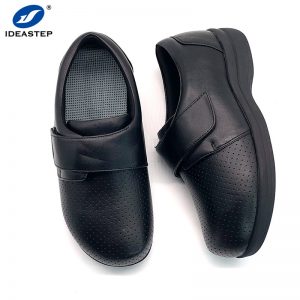Neuropathy Diabetic and Therapeutic Footwear
Diabetic shoes are required for persons with diabetes.
A terrible shoe day is readily overlooked by the majority of us. True, you may have a blistering heel or a hurting arch, but this isn’t cause for concern. A terrible shoe day, on the other hand, might be life-threatening for diabetics. Wearing the wrong shoes can cause major difficulties, and in some cases, amputation is the only way to stop the harm from getting worse.
Diabetic shoes, often known as extra depth or therapeutic shoes, are designed to reduce the risk of skin ulcers and disintegration in diabetics…

especially those who are already afflicted with a foot condition.
In more ways than one, diabetic shoes for men and women differ from standard footwear. They are wider and deeper than typical, for starters. This allows the feet to move freely without rubbing against the interiors of the shoes. Furthermore, many of these shoes are constructed without the use of seams. The ordinary shoe wearer is unconcerned about seams. Seams, on the other hand, might be irritating for diabetics since they rub on the feet.
These therapeutic shoes tend to provide higher stability, lowering the likelihood of twisting the ankle or stumbling. They also have a deeper, wider construction and some versions with seamless inside.
A Diabetic’s Feet: A Closer Examine
Diabetes isn’t anything to giggle about. Diabetes affects 17.9 million men and women in the United States alone. While effective blood sugar control can help to limit the risk of complications, poorly controlled diabetes leaves many regions of the body (particularly the feet) exposed to even minor accidents.
Diabetes, as you may know, can cause substantial nerve damage known as neuropathy. Because of this disorder, the nerves in the feet are unable to detect pain. Fortunately, it doesn’t happen overnight, so diabetics have time to prepare and minimize the consequences.
Many diabetic men and women report years of strange, tingling feelings in their feet (tell-tale indicators of deteriorating nerves) before losing ALL sensation in both feet. However, once neuropathy has progressed to that stage, it is difficult to reverse. Diabetics can trip over broken glass, needles, or syringes, break a toe, and sustain a variety of other foot ailments… They won’t feel anything since they won’t be aware of it.
Neuropathy affects people’s ability to detect foreign items in their shoes. A patient who didn’t feel a thing when a jack went into his shoe, according to James McGuire, director of the Leonard S. Abrams Center for Advanced Wound Healing at Temple University’s School of Podiatric Medicine.
He just put on the shoe, stepped down, and drove the jack into his foot, then walked about all day, resulting in an infection.
‘Dr. McGuire stated.
Yes, when you have diabetes and neuropathy, even little injuries and accidents can turn into illnesses…
It may potentially necessitate amputation. That’s how serious it is!
Important Note on Diabetic Shoe Fitting
To custom-fit your diabetic shoes, seek the assistance of a certified specialist. Because peripheral neuropathy stops your feet from having any sensation, you won’t be able to know if they’re too tight. You may guarantee that your diabetic shoes are created with a proper fit and stimulate good blood and air circulation by seeking the expertise of a qualified, custom-fitting professional. In terms of design, these are some elements to look for in diabetic footwear:
Structure is deep and wide, allowing for bespoke diabetic insoles.
There are no inside or covered seams to prevent rubbing injuries and skin sores.
It has a large toe box that doesn’t pinch or squeeze your toes.
Adjustable fit – you don’t want it to be too snug or too loose on your feet because it will slip about.
Other Diabetic Footwear Products
You should try to use diabetic shoes as much as possible. They’re made for comfort, and its tight structure keeps stones, thumbtacks, and other small but deadly objects out. However, you may prefer something with more breathing area for your feet. If that’s the case, here are some additional diabetic footwear and items to consider. Diabetic socks have their own page on our site.
Sandals for Diabetics: To be honest, neither men’s nor women’s sandals are suitable for diabetics. Small stones and trash can readily sneak into sandals, despite their light weight and comfort. That’s a major concern for diabetics whose feet can’t feel anything.
If you can’t stand wearing shoes and must wear sandals, choose a pair with a high-grip, multilayer sole, a thick pressure sock, and the ability to support molded foot beds / orthotics.
Diabetic Slippers: If you spend most of your time at home, a pair or two of diabetic slippers could help your aching feet. Diabetic shoes have the same orthopedic and therapeutic properties as these slippers.
From the ground up, it’s been built to protect and assist you.
Toe boxes are roomy to reduce the danger of blisters and irritation.
Removable insoles allow you to customize your orthotic needs.
You want a pair of diabetic slippers that is flexible and has an adjustable closure when shopping. Because diabetic feet might change form and size over time, the adjustable closure will come in helpful. You should also look for diabetic slippers with extra traction on the outsoles, draw tabs at the heels, comfy wool uppers, and durable construction.
